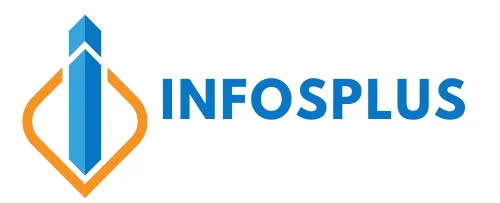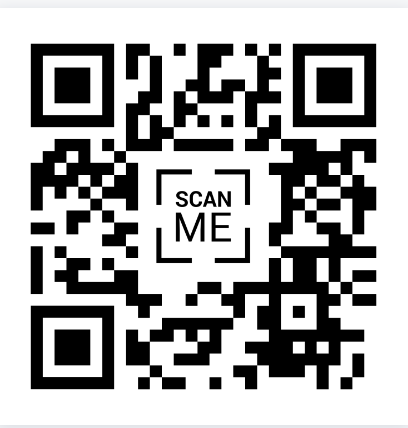In today’s digital age, QR codes have emerged as a versatile tool for bridging the gap between offline and online content. From marketing campaigns to product packaging, QR codes have become an integral part of user engagement strategies. One of the most effective uses of QR codes is facilitating app downloads. This article will guide you through the process of creating a QR code specifically for app downloads, highlighting its importance, the step-by-step creation process, and best practices to ensure success.
1. Understanding QR Codes
What are QR Codes?
QR codes, or Quick Response codes, are two-dimensional barcodes that can store a wealth of information. Unlike traditional barcodes, which can only hold a limited amount of data, QR codes can encode URLs, text, contact information, and more. This makes them an ideal choice for various applications, including marketing, event ticketing, and app downloads.
How QR Codes Work
When a user scans a QR code with their smartphone camera or a dedicated QR code reader, the encoded information is quickly decoded and displayed. For app downloads, the QR code typically directs users to the app store link for Android or iOS devices, allowing for immediate access to the application.
The Importance of QR Codes for App Downloads
In a world where speed and convenience are paramount, QR codes streamline the process of app discovery and installation. Instead of manually searching for an app in an app store, users can simply scan a QR code and be directed to the app’s download page. This ease of use is crucial for enhancing user engagement and improving overall app performance.
2. Benefits of Using QR Codes for App Downloads
Enhanced User Experience
QR codes simplify the user experience by eliminating the need for manual input. Users can scan the code and instantly access the app download page, reducing frustration and making the process more enjoyable.
Increased Download Rates
By providing a quick and easy method for accessing your app, QR codes can significantly boost download rates. Studies show that when users encounter a QR code, they are more likely to take immediate action, resulting in higher conversion rates.
Offline Accessibility
QR codes can be placed on physical materials like flyers, posters, and business cards. This allows potential users to access your app information even when they are offline, increasing the chances of conversions.
3. Step-by-Step Guide to Creating a QR Code for App Downloads
Creating a QR code for your app is a straightforward process. Follow these steps to generate your QR code successfully.
Step 1: Choose Your App Store Link
The first step in creating a QR code for app downloads is to select the appropriate link. If your app is available on multiple platforms (like Android and iOS), you may want to create separate QR codes for each store. Here’s how to do it:
- For Android: Use the Google Play Store link for your app, which typically looks like this: https://play.google.com/store/apps/details?id=com.yourapp.
- For iOS: Use the App Store link for your app, which usually appears as: https://apps.apple.com/app/idYOUR_APP_ID.
If you want to provide a single QR code that redirects users based on their device, consider using a service like Branch.io or Bitly, which allows you to create a universal link that detects the user’s platform and directs them to the appropriate store.
Step 2: Select a QR Code Generator
There are numerous QR code generators available online, both free and paid. Here are a few popular options:
- QR Code Generator: A user-friendly tool that offers customization options.
- QR Code Monkey: Allows you to create high-quality QR codes and customize colors and designs.
- GoQR.me: A straightforward QR code generator that offers basic customization.
Choose a generator that meets your needs, keeping in mind whether you want advanced features like tracking and analytics.
Step 3: Customize Your QR Code
Once you’ve selected a QR code generator, it’s time to customize your QR code. Most generators allow you to change the color, add a logo, or include a frame or call-to-action. Customizing your QR code not only makes it visually appealing but also reinforces your brand identity.
- Colors: Choose colors that align with your branding. Ensure that there is enough contrast between the foreground and background for easy scanning.
- Logo: Adding your app logo can help users quickly identify the app they are downloading.
- Frame/Call-to-Action: Including a frame with a call-to-action, like “Scan to Download,” encourages users to take action.
Step 4: Generate and Download Your QR Code
After customizing your QR code, click the “Generate” button. The generator will create your QR code, which you can then download in various formats (PNG, JPEG, SVG). Choose the format that best suits your needs.
4. Best Practices for Using QR Codes in App Marketing
Placement of QR Codes
Where you place your QR code can significantly impact its effectiveness. Consider the following locations:
- Print Materials: Flyers, brochures, and business cards are ideal places to include QR codes, especially at events or in retail environments.
- Digital Marketing: Include QR codes in emails, websites, and social media posts to direct users to download your app.
- Packaging: If your app is associated with a physical product, include the QR code on the packaging to encourage downloads.
Call to Action
A clear call to action (CTA) can motivate users to scan your QR code. Phrases like “Scan to Download Our App” or “Get Started Now” create a sense of urgency and guide users toward the desired action.
Tracking and Analytics
To gauge the effectiveness of your campaigns, consider using a generator that offers tracking features. This will allow you to see how many users scanned your code, where they came from, and other valuable insights. Analyzing this data can help you refine your marketing strategies for better results.
5. Troubleshooting Common Issues
Even with the best intentions, QR codes can sometimes present challenges. Here are a few common issues and how to address them.
QR Code Not Scanning
If users are having trouble scanning your , consider the following:
- Check the Quality: Ensure that the is high-resolution and clear. A blurry or pixelated code can lead to scanning issues.
- Contrast: Make sure there’s enough contrast between the e and its background. If the colors are too similar, it may not scan well.
- Test Before Distribution: Always test your with multiple devices before distributing it to ensure it works properly.
Redirect Issues
If you’re using a universal link and users are being directed to the wrong store, double-check the settings in your link management platform. Make sure the links for Android and iOS are correctly configured.
Design Compatibility Problems
When customizing your QR code, ensure that any design elements (like logos or colors) do not interfere with the scannability of the code. Avoid placing important design elements over the code’s central area, as this can disrupt the scanning process.
6. Conclusion
As the mobile app landscape continues to evolve, QR codes remain a powerful tool for driving downloads and enhancing user engagement. By following the steps outlined in this article, you can create effective QR codes that not only simplify the download process but also boost your app’s visibility and user acquisition.
Embracing QR codes in your app marketing strategy can set you apart in a competitive market. With their ability to connect the offline and online worlds, QR codes are more than just a trend—they are a vital component of the future of mobile applications.
By understanding how to create and utilize QR codes effectively, you can maximize your app’s potential and provide users with a seamless downloading experience. Whether you’re launching a new app or promoting an existing one, QR codes are an essential tool for achieving your goals in the digital age.



More Stories
Legal Implications of Using a Virtual Office
7 Inspiring Startup Business Stories You Must Read
How To Remove Stains From Rugs Or Carpets